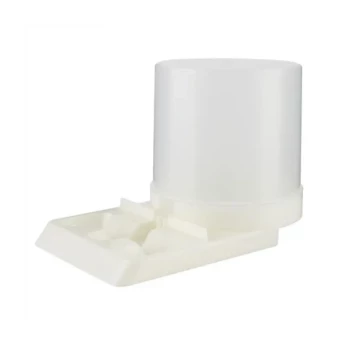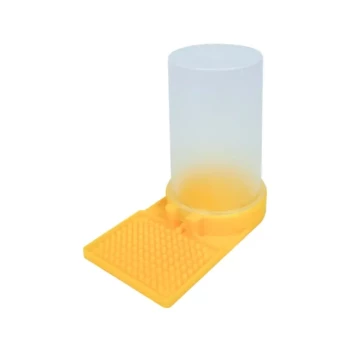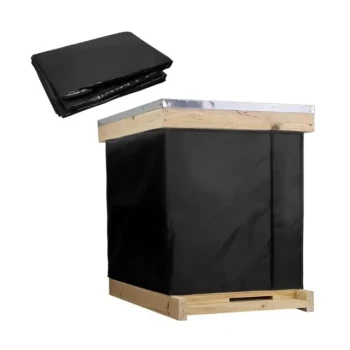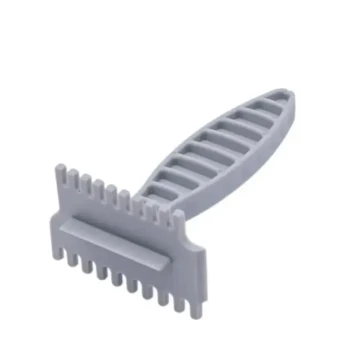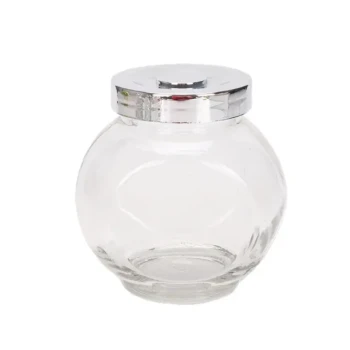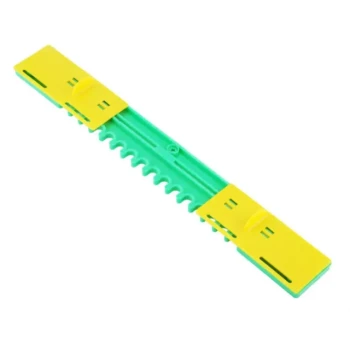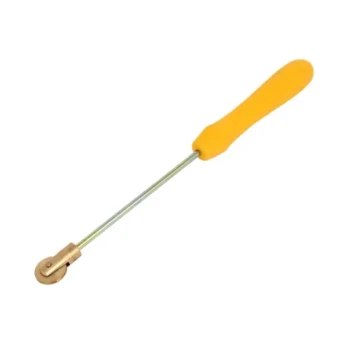At its core, pollen substitute is a strategic tool used by beekeepers to provide honeybees with the essential protein they need for colony growth. It serves as a replacement for natural pollen, fueling the queen's egg-laying and enabling worker bees to raise the next generation of brood, especially when natural sources are scarce.
The central purpose of feeding pollen substitute is not just to feed bees, but to strategically stimulate brood production. This allows a beekeeper to build a large, powerful workforce ahead of the main nectar flow, maximizing the colony's health and potential for honey production.

The Role of Protein in the Hive
While honey (carbohydrates) provides energy for adult bees, pollen (protein and fats) is the building block of life in the colony. A lack of protein brings all growth to a halt.
Fueling the Queen's Egg Production
The queen bee's ability to lay eggs—up to 2,000 per day—is directly tied to the nutrition she receives.
Worker bees feed the queen a rich substance called royal jelly. The production of this food is entirely dependent on the workers having access to protein from pollen or a pollen substitute.
Nourishing the Next Generation
Young bee larvae are voracious eaters. For the first few days of their lives, they are fed royal jelly by nurse bees.
Without an adequate protein source, nurse bees cannot produce this critical brood food. This forces the colony to stop raising new bees, leading to a rapid decline in population.
The Seasonal Imperative
The transition from late winter to early spring is the most critical period for colony buildup. The bees must raise several generations of new workers to be ready for the first major nectar flow.
Feeding a pollen substitute allows the colony to begin this buildup weeks before natural pollen becomes widely available, giving them a significant head start.
Strategic Timing: When to Intervene
Feeding pollen substitute is a matter of precise timing. Providing it too early or too late can be ineffective or even detrimental.
The Early Spring Window
The most common and effective time to feed is in late winter or very early spring, typically 4-6 weeks before the first natural pollen appears in your specific area.
This timing is designed to create a population boom of foragers that will be ready to fly the moment the first flowers bloom.
Using a Stimulatory Signal
Many beekeepers first provide a light sugar syrup feed. This simulates a natural nectar flow, which encourages the queen to begin laying eggs.
The pollen substitute is then added to provide the protein resources necessary to support the brood that results from this increased egg-laying.
Responding to a Pollen Dearth
Beyond spring, pollen substitutes can be a lifeline during summer or fall droughts. If natural pollen sources dry up, a colony can stop raising brood.
Providing a substitute during these periods can prevent a population crash and ensure the colony has enough young bees to survive the coming winter.
Understanding the Trade-offs
While beneficial, using pollen substitute is an intervention that carries risks if not managed correctly.
The Risk of a "False Spring"
If you feed too early and the colony builds up a large population of brood, a late cold snap can be disastrous.
The cluster of bees may be too small to keep the large area of new brood warm, causing it to die. Furthermore, the now-massive population can quickly consume all its stores if poor weather prevents foraging.
Attracting Unwanted Pests
Pollen patties left in a hive for too long, especially in a weak colony, can become a breeding ground for pests like the Small Hive Beetle or wax moths.
It is crucial to only provide an amount the bees can consume quickly and to monitor the hive for pest activity.
Substitute Is Not a Perfect Replacement
Natural pollen from diverse floral sources provides a complex range of nutrients, minerals, and microbes that no substitute can perfectly replicate.
Pollen substitute should be seen as a targeted tool for specific management goals, not a long-term replacement for a healthy environment with abundant natural forage.
Making the Right Choice for Your Goal
Your decision to feed should be based on a clear objective for your colony.
- If your primary focus is maximizing honey production: Feed pollen substitute in early spring to build a massive workforce ready for the main nectar flow.
- If your primary focus is colony survival: Use pollen substitute as an emergency feed during unexpected pollen dearths in summer or fall to prevent brood rearing from shutting down.
- If your primary focus is raising new queens or splitting colonies: Provide a steady supply of pollen substitute to ensure the bees have the resources to raise healthy, well-fed queens and brood.
Ultimately, understanding how and when to use pollen substitute empowers you to manage your colony's growth cycle proactively.
Summary Table:
| Purpose | Key Benefit | Ideal Timing |
|---|---|---|
| Stimulate Brood Production | Builds a large workforce for the nectar flow | Late winter/early spring (4-6 weeks before natural pollen) |
| Emergency Nutrition | Prevents population crash during pollen dearth | Summer or fall droughts |
| Support Queen & Splits | Ensures resources for raising healthy new queens and brood | When increasing colony numbers |
Ready to build stronger, more productive hives?
As a trusted supplier for commercial apiaries and distributors, HONESTBEE provides the high-quality pollen substitutes and feeding equipment you need to execute this critical management strategy effectively. Our wholesale-focused operations ensure you get the reliable supplies to support your colony's growth and health goals.
Contact HONESTBEE today to discuss your needs and optimize your beekeeping operation.
Visual Guide

Related Products
- HONESTBEE Entrance Bee Feeder Professional Hive Nutrition Solution for Beekeeping
- HONESTBEE Professional Entrance Bee Feeder Hive Nutrition Solution
- Food Grade Plastic bee Foundation for Bee Frames
- Long Langstroth Style Horizontal Top Bar Hive for Wholesale
- Professional Durable Two-Piece Plastic Bee Escape
People Also Ask
- How is the mesh ladder and barrier installed in the feeder box? A Step-by-Step Guide to Prevent Bee Drowning
- How to make an entrance feeder for bees? A DIY Guide for Safe & Effective Feeding
- How does the entrance feeder method work? A Guide to Simple But Risky Hive Feeding
- Are entrance feeders good for bees? Prioritize Hive Health Over Convenience
- How do you make an entrance feeder for bees? A Guide to Safe & Effective Hive Feeding
